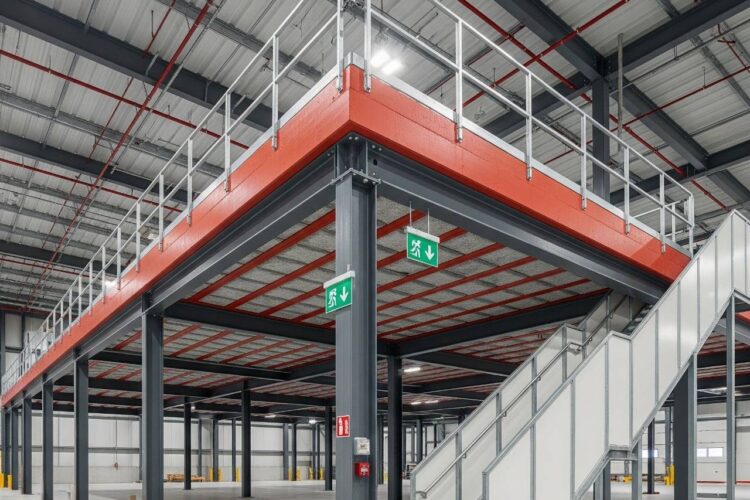
Why Fire-Rating Matters in Mezzanine Floors and Materials
When designing or constructing a mezzanine, aesthetics and functionality often take center stage — but there’s one factor that can’t be overlooked: fire safety. Specifically, the fire rating of your mezzanine floors and materials plays a critical role in protecting people, property, and compliance with regulations.
Whether your mezzanine is in an office, warehouse, or retail space, understanding fire-rating requirements is not just about passing inspections — it’s about building smart and safe.
What Is a Fire-Rated Material?
These materials are designed to resist fire for a set time — usually from 30 minutes to a few hours — helping slow down its spread. This doesn’t mean they’re fireproof — rather, they are designed to slow the spread of flames and heat, giving occupants time to evacuate and first responders time to act.
In mezzanine construction, fire-rated components might include:
- Floor panels (e.g., composite steel decks with fire-resistant coatings)
- Supporting beams or columns with fireproofing treatment
- Fire-rated drywall or enclosures beneath the mezzanine
- Non-combustible finishes on staircases or railings
Why It Matters for Mezzanines
Mezzanines are elevated platforms often inserted into existing buildings. Because they create new usable space — sometimes above people or equipment — fire safety becomes more complex.
Here’s why fire-rating is essential in mezzanine contexts:
- Escape Time and Access- A mezzanine adds a level, which means occupants may have limited exit options. Fire-rated materials slow fire progression, allowing time for safe evacuation via stairs or alternate routes.
- Protection of Structural Integrity- Heat can weaken metal and destroy timber. Fire-rated coatings or treatments help maintain structural strength during a fire, preventing premature collapse of the mezzanine.
- Meeting Safety Standards- Even when codes aren’t explicitly enforced (e.g., in some private or temporary spaces), using fire-rated materials reduces liability, increases occupant safety, and prepares buildings for future changes or inspections.
- Insurance and Risk Reduction- Buildings with fire-resistant mezzanine systems often see reduced insurance premiums. More importantly, they lower the risk of total loss or damage during a fire event.
Retrofit Considerations
If your mezzanine wasn’t originally built with fire-rated components, upgrades can still be made:
- Apply fireproofing sprays to exposed beams
- Add fire-rated cladding beneath the mezzanine floor
- Replace or overlay non-rated surfaces with tested materials
- Ensure staircases have fire-resistant finishes and are clearly marked for exit access
Retrofitting is especially important in facilities that have evolved in use — for instance, when a storage mezzanine becomes a workspace or showroom.
Final Thought- Floor Fire-Protection isn’t just a box to tick — it’s a core principle of safe mezzanine design. By selecting the right materials and ensuring compliance with fire-safety best practices, you’re investing in peace of mind, longevity, and responsible construction. Whether you’re building new or upgrading an existing platform, make fire safety part of the foundation. Have questions about fire-rated mezzanine design? Contact us — we’re here to help you build safer.



